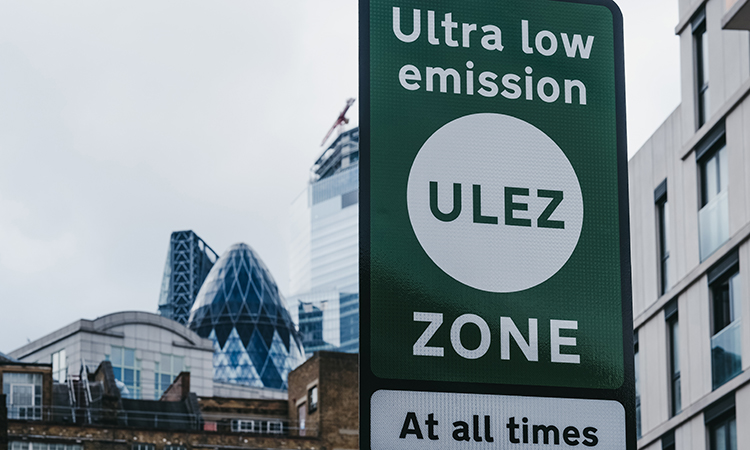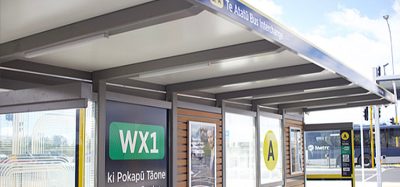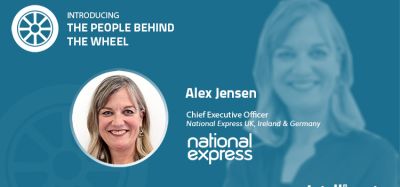London’s Ultra Low Emission Zone expanded to include inner London
- Like
- Digg
- Del
- Tumblr
- VKontakte
- Buffer
- Love This
- Odnoklassniki
- Meneame
- Blogger
- Amazon
- Yahoo Mail
- Gmail
- AOL
- Newsvine
- HackerNews
- Evernote
- MySpace
- Mail.ru
- Viadeo
- Line
- Comments
- Yummly
- SMS
- Viber
- Telegram
- Subscribe
- Skype
- Facebook Messenger
- Kakao
- LiveJournal
- Yammer
- Edgar
- Fintel
- Mix
- Instapaper
- Copy Link
Posted: 25 October 2021 | Intelligent Transport | No comments yet
By expanding the Ultra Low Emission Zone, which is now 18 times the size of the original central London zone, the Mayor of London hopes to significantly improve air quality and Londoners’ health.


The Mayor of London, Sadiq Khan, has announced the expansion of the area covered by the Ultra Low Emission Zone (ULEZ) from central London up to, but not including, the North Circular (A406) and South Circular (A205) Roads on 25 October 2021.
The new zone is 18 times the size of the central London zone and now covers 3.8 million people. Measuring 380km2, it covers one quarter of London and is the largest zone of its kind in Europe. It will bring the health benefits of cleaner air to millions more Londoners, both inside and outside of the newly expanded zone. The scheme will operate 24 hours a day, every day of the year (except Christmas Day).
The ULEZ expansion, alongside tighter London-wide Low Emission Zone (LEZ) standards for heavy vehicles that were introduced in March 2021, is expected to reduce nitrogen oxides (NOx) emissions from road transport by 30 per cent across London in 2021.
The ULEZ is also a crucial step towards the Mayor’s ambitions to tackle the climate emergency and put London on the path to be a net zero carbon city by 2030. It is also an issue of social justice, with the poorest Londoners, and Londoners from ethnic minority backgrounds, being least likely to own a car but also the worst affected by toxic air.
Mayor Khan’s scrappage scheme
A major awareness campaign has been underway over the past three years to ensure that drivers and businesses are ready for the ULEZ expansion, with Transport for London’s (TfL) online vehicle checker being used more than 20 million times since 2018. Over a million letters have been sent to owners of non-compliant vehicles seen inside the zone.
The Mayor has provided £61 million in funding for grants for small businesses, charities operating minibuses and low-income and disabled Londoners to scrap their older, more polluting vehicles. However, unlike other Clean Air Zones, London has had no government support for its scrappage schemes. Despite this, these schemes have helped to remove over 12,000 more polluting vehicles from London’s roads, the single biggest such programme in the UK.
The existing ULEZ and the London-wide LEZ have shown that charging to incentivise emissions reductions works and its impacts on air quality and health are rapid. Before the pandemic, there had been a 44 per cent reduction in roadside nitrogen dioxide concentrations in central London compared to in February 2017, when changes associated with the ULEZ began. The compliance rate for heavy vehicles covered by the London-wide LEZ is an impressive 95 per cent up, from 48 per cent in February 2017 when the scheme was first announced.
Preparing for the expansion
Many Londoners have already taken action to prepare ahead of the ULEZ expansion. Early indications show that 87 per cent of vehicles travelling in the zone already meet the ULEZ standards. This is a dramatic increase in compliance compared to 39 per cent in February 2017, when changes associated with the ULEZ began. This means that Londoners are already experiencing the benefits of cleaner air. This is supported by new data, published in late October 2021 by the Clean Cities Campaign, that London drivers are ditching diesel cars six times faster than the rest of UK.
This high compliance rate also means that, as the expanded scheme launches, it is expected that only 110,000 vehicles each day are likely to need to pay the £12.50 charge. There are a number of options to avoid paying the charge, including walking, cycling, taking public transport, using shared mobility (such as a car club) or upgrading to a cleaner vehicle.
The expanded ULEZ has the most stringent emission standards, operates for longer hours and covers the largest area of any charging scheme in Europe. It is also a huge technical feat. Together, the Congestion Charge, LEZ and ULEZ require the processing of millions of images and tens of thousands of payments every day.
Crucially, these benefits are felt beyond the zone and even beyond London. Environmental Defense Fund analysis found that vehicles that passed through London’s Low Emission Zone for heavy vehicles went on to drive through 95 per cent of the major towns and cities in England and Wales, bringing air quality benefits to a combined population of 18 million people.
Industry responses
I am incredibly proud that expanding the Ultra Low Emission Zone today will clean up London’s toxic air pollution and help to tackle the global climate emergency by reducing emissions”
The Mayor of London, Sadiq Khan, said: “This is a landmark day for our city. I pledged to be the greenest Mayor that London’s ever had and I am incredibly proud that expanding the Ultra Low Emission Zone today will clean up London’s toxic air pollution and help to tackle the global climate emergency by reducing emissions. In central London, the ULEZ has already helped to cut toxic roadside nitrogen dioxide pollution by nearly half and led to reductions that are five times greater than the national average. But pollution isn’t just a central London problem, which is why expanding the ULEZ today will benefit Londoners across the whole of the city and is a crucial step in London’s green recovery from this pandemic.”
“This is also about social justice – we know pollution hits the poorest Londoners, who are least likely to own a car, the hardest, which is why I’m doing everything that I can to improve air quality and protect the health of all Londoners. I will not stand by while pollution leads to 4,000 Londoners dying early each year and our children growing up with stunted lungs. The expanded ULEZ is a vital step towards helping to combat London’s illegal air and reducing the emissions that are harming our planet,” Mayor Khan added.
The expanded Ultra Low Emission Zone is vital if we are to help prevent more premature deaths and serious health conditions, as well as tackle the pressing issue of the climate emergency”
Alex Williams, TfL’s Director of City Planning, said: “London’s toxic air is a crisis that requires bold action right now. The expanded Ultra Low Emission Zone is vital if we are to help prevent more premature deaths and serious health conditions, as well as tackle the pressing issue of the climate emergency. The central ULEZ that launched in April 2019 was a world first and has already seen harmful nitrogen dioxide slashed by 44 per cent. Today’s expansion of the zone will see the whole city breathing cleaner air.”
Williams continued: “More than 20 million motorists have already checked the compliance of their vehicle since 2018 and, if you still unsure, please use our checker. We are now seeing 87 per cent vehicles in the zone meeting the standard – this is much than we would have expected if the scheme hadn’t been introduced, and it highlights how the scheme has already been effective in cleaning up London’s air. For those liable for the charge, we would ask them to consider walking and cycling where possible, or using public transport. If they do need to drive, car clubs with ULEZ-compliant vehicles, or switching to a cleaner vehicle, are the best options.”
As COP26 gets underway, all eyes will be on London to watch how successful the ULEZ will be at cleaning up the capital’s air”
Nick Bowes, Chief Executive at Centre for London, said: “The expanded Ultra Low Emission Zone is the most ambitious scheme of its kind in the world. As COP26 gets underway, all eyes will be on London to watch how successful the ULEZ will be at cleaning up the capital’s air. However, the ULEZ has its limitations. It’s an analogue scheme in a digital age, relying on technology from 2003. Many petrol and diesel vehicles are still exempt from the scheme, and extending the reach of a flat charge may incentivise Londoners to drive more to get value from their daily payments. And less well-off Londoners who rely on their cars for work and lack the means to switch to a cleaner vehicle will be particularly penalised.”
“The Mayor of London should use COP26 as an opportunity to be bold and kickstart plans to replace the growing patchwork of road charges with a simpler, smarter and fairer road user charging scheme which ensures that road users pay for the true cost of a journey. A pay-per-mile road user charging scheme would improve air quality, reduce congestion, encourage Londoners to walk, cycle and use public transport, and help to plug the yawning hole in Transport for London’s budget. Any additional revenue could also top up the Mayor’s scrappage scheme and help Londoners to exchange their polluting vehicle for a cleaner one. The likelihood is that, at some point in the near future, the government will have to introduce a nationwide road user charging scheme to replace lost fuel duties. The Mayor should grab the opportunity to go further now so that London has a system that works for the city.”
Related topics
Air Quality, Public Transport, Sustainable Urban Transport, Traffic Management, Transport Governance & Policy
Related cities
London, United Kingdom
Related organisations
Transport for London (TfL)
Related people
Alex Williams, Nick Bowes, Sadiq Khan








